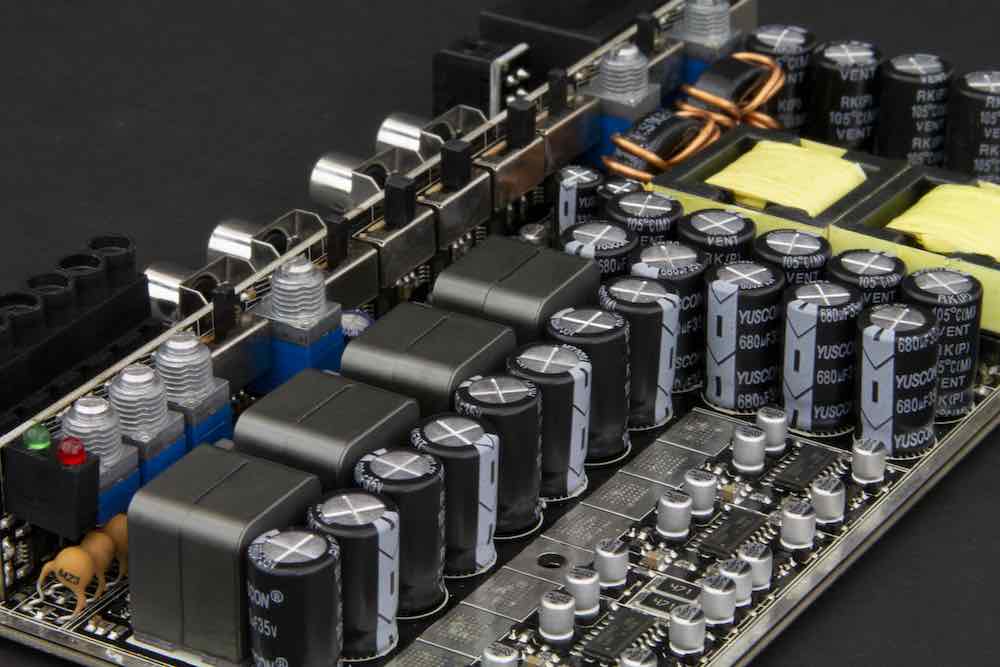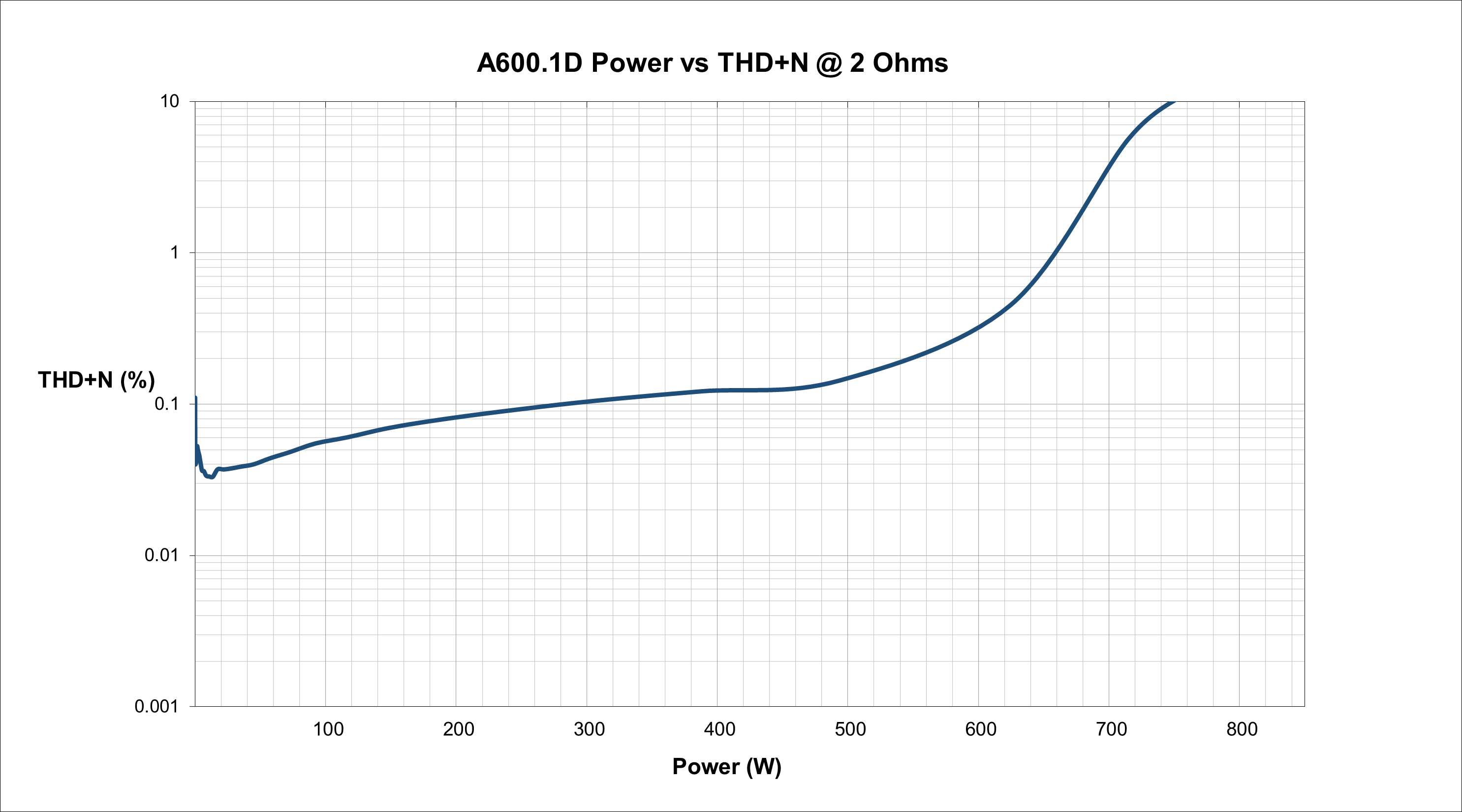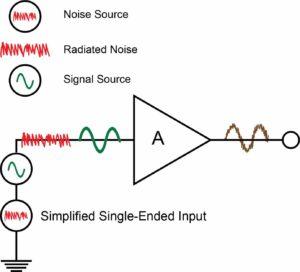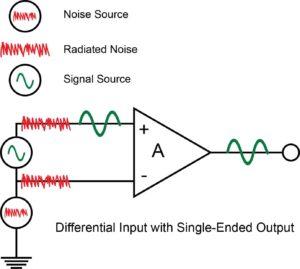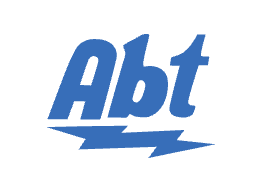A600.1D High Fidelity Class-D Amplifier
Power Output @ 4 Ω: 450 Watts x 1 Channel
Power Output @ 2 Ω: 600 Watts x 1 Channel
THD @ Rated Power: 0.1%
THD @ 20% of Rated Power: 0.02%
Signal to Noise Ratio @ 1 Watt: 80 dB
Signal to Noise Ratio @ Rated Power: 108dB
Frequency Response (=/- 1dB): 10 Hz – 400 Hz
Damping Factor @ 4 Ω: >600
Input Type: Differential
Input Sensitivity (Line Level Inputs): 0.5 Vp – 10 Vp
Maximum Input Voltage (Speaker Level Inputs): 30 Vp
Input Impedance (Line Level Inputs): 10 kΩ
Input Impedance (Speaker Level Inputs): 1.2 kΩ
Turn On Modes: Signal Sense, 6 V Offset Detect, Remote Turn On
Signal Sensing Turn On Threshold (Line Level Inputs): 45 mVp
Signal Sensing Turn ON Threshold (Speaker Level Inputs): 800 mVp
Crossover Filter Slope: 12 dB/Oct
Crossover Filter Type: Bandpass, Highpass, None
Crossover Frequency Ranges: HP: 5 Hz – 40 Hz; LP: 50 Hz – 500 Hz
Phase Control: 0° – 180°
Bass Boost @ 45 Hz: 0 – 15 dB
Quiescent Current Draw: 0.9 A
Maximum Current Draw: 60 A
Required Power Line Fuse: 60 A
Dimensions: 210 mm x 126mm X 32 mm (8-17/64” x 4-61/64” x 1-17/64”)
![]() Four Layer PCB (Printed Circuit Board)
Four Layer PCB (Printed Circuit Board)
Board layout is a key component of a high fidelity amplifier design, especially when miniaturization is a key feature. Audiofrog HiFi Class-D amplifiers incorporate a four layer PC board that helps to isolate the magnetic circuit in the power supply and Class-D modulators from the amplifier’s preamp and audio sections. Small I/E transformers oriented to place the preamp circuit in a magnetic null replace the toroidal transformers often used in larger designs. High speed switches responsible for power supply and output voltage are located on the opposite side of the board from the preamp and audio circuits and are isolated by an internal shield layer. Heat is transferred from the switches on the bottom of the board to the heat sink on the top through heat sink pads incorporated into the top and bottom PC board layers.
Audiofrog HiFi Class-D amplifiers provide noise free performance unmatched by similarly sized high power class D amplifiers.
![]()
Ultra High-Frequency Switching
Ultra High-Frequency Switching in our new HiFi Class-D designs move the power supply switching frequency to 100kHz and the class D modulator frequency to 420kHz. This allows for dramatically smaller magnetics and smaller transformers make a smaller amplifier possible. In addition, the higher modulation frequency makes it possible to move the output low pass filter frequency an octave higher than many other class-D designs. The output filter in Audiofrog’s new HiFi Class- designs is set to 40kHz rather than the usual 20kHz.
Because the output filter in a class-D amplifier is a passive low pass filter, it has to be designed for a specific load—usually 4 ohms. When measured with other loads, the frequency response changes at and around the filter frequency. A higher resistance load creates a peak at the filter frequency and a lower resistance load causes attenuation at and around the filter frequency. This has long been a criticism of class-D design.
For an amplifier designed primarily to drive speakers at low frequencies and which includes a built in low pass filter in the on-board crossover, this output filter doesn’t have any real effect on the usable high frequency response of the amplifier.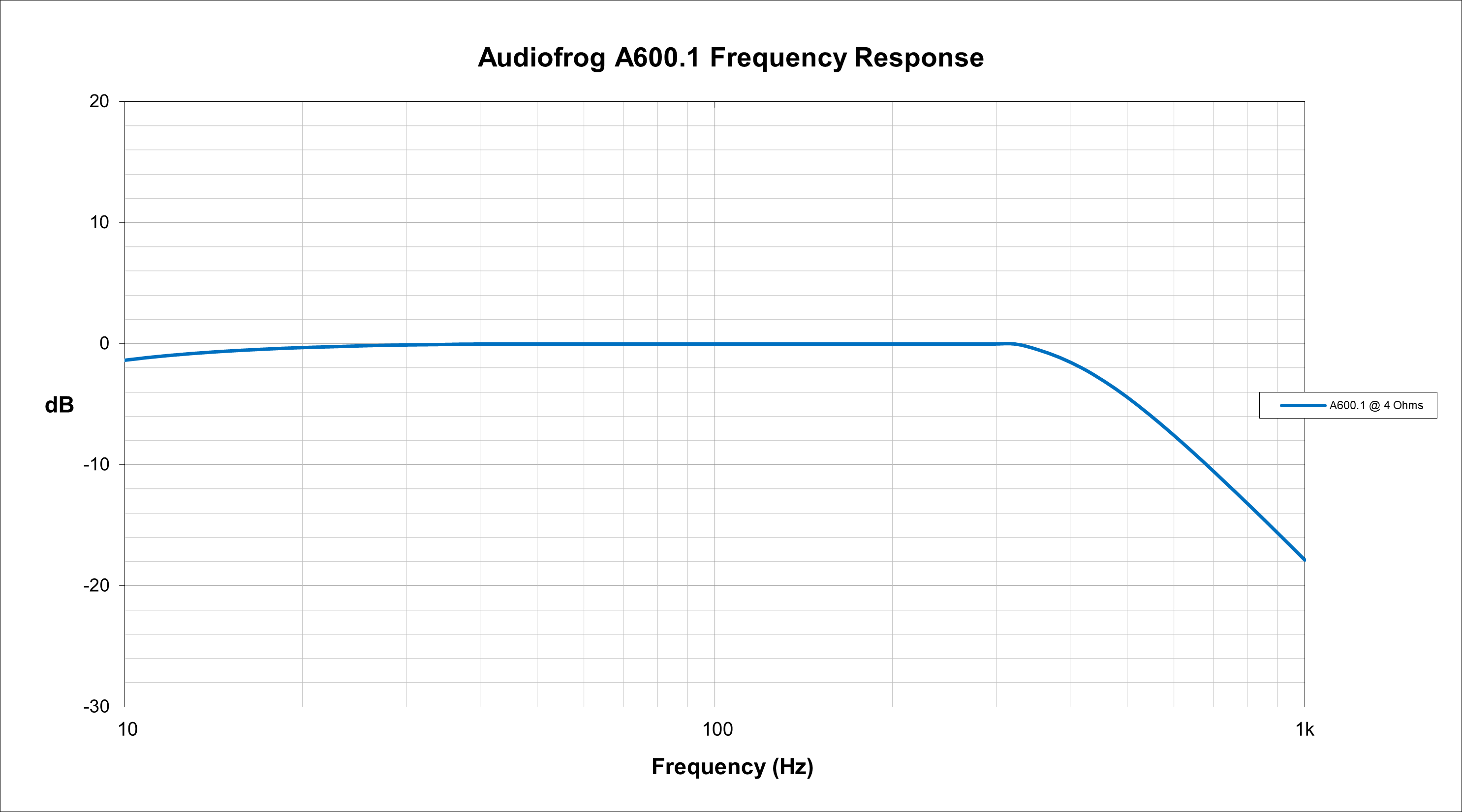
Audiofrog HiFi Class-D A600.1D amplifier provides plenty of power in a small chassis perfect for driving a GB Series 10″ or 12″ subwoofer.
![]() Integrated Feedback
Integrated Feedback
Based on IR’s 2092 integrated class-D audio driver, feedback through an operational trans-conductance amplifier provides an analog version of a sigma-delta convertor, which shifts error in the audible frequency range upwards to the inaudible high-frequency spectrum, dramatically reducing noise in the signal. Dead time is programmable for optimization of zero-crossing with minimum distortion.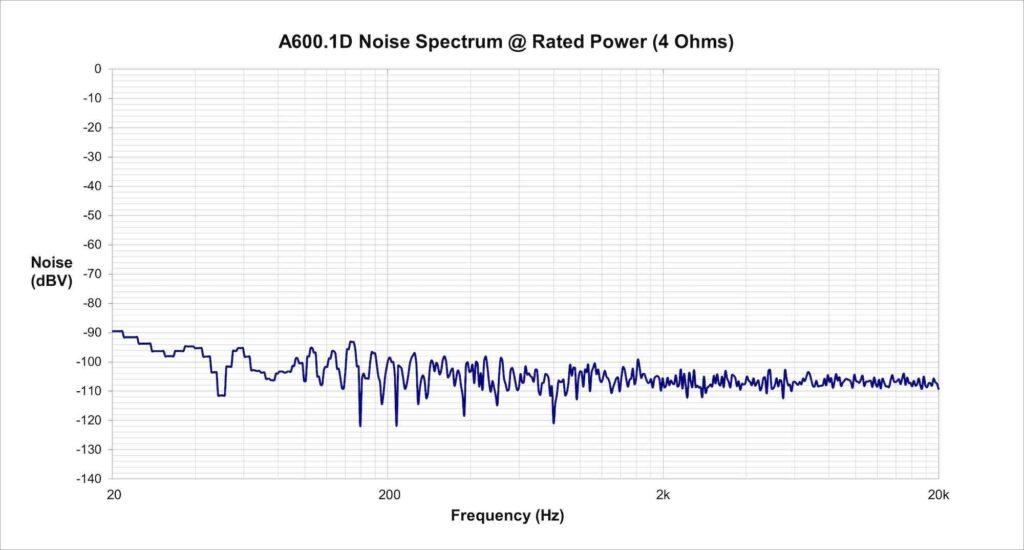
Audiofrog HiFi Class-D amplifiers provide noise and distortion performance that rivals the best class AB amplifiers in significantly smaller and more efficient packages.
![]() HSS Heat Sink Shield
HSS Heat Sink Shield
Audiofrog HiFi Class-D amplifiers include a dual purpose heat sink that also acts as an EMI shield. The heat sink and the bottom plate are electrically connected to each other and to one of the internal PCB layers through a trace that runs the perimeter of the board on the top and on the bottom. Combining the sink, the bottom panel and a PCB layer help to minimize EMI (electromagnetic interference) emitted from the amplifier, which prevents degradation of the radio’s FM reception.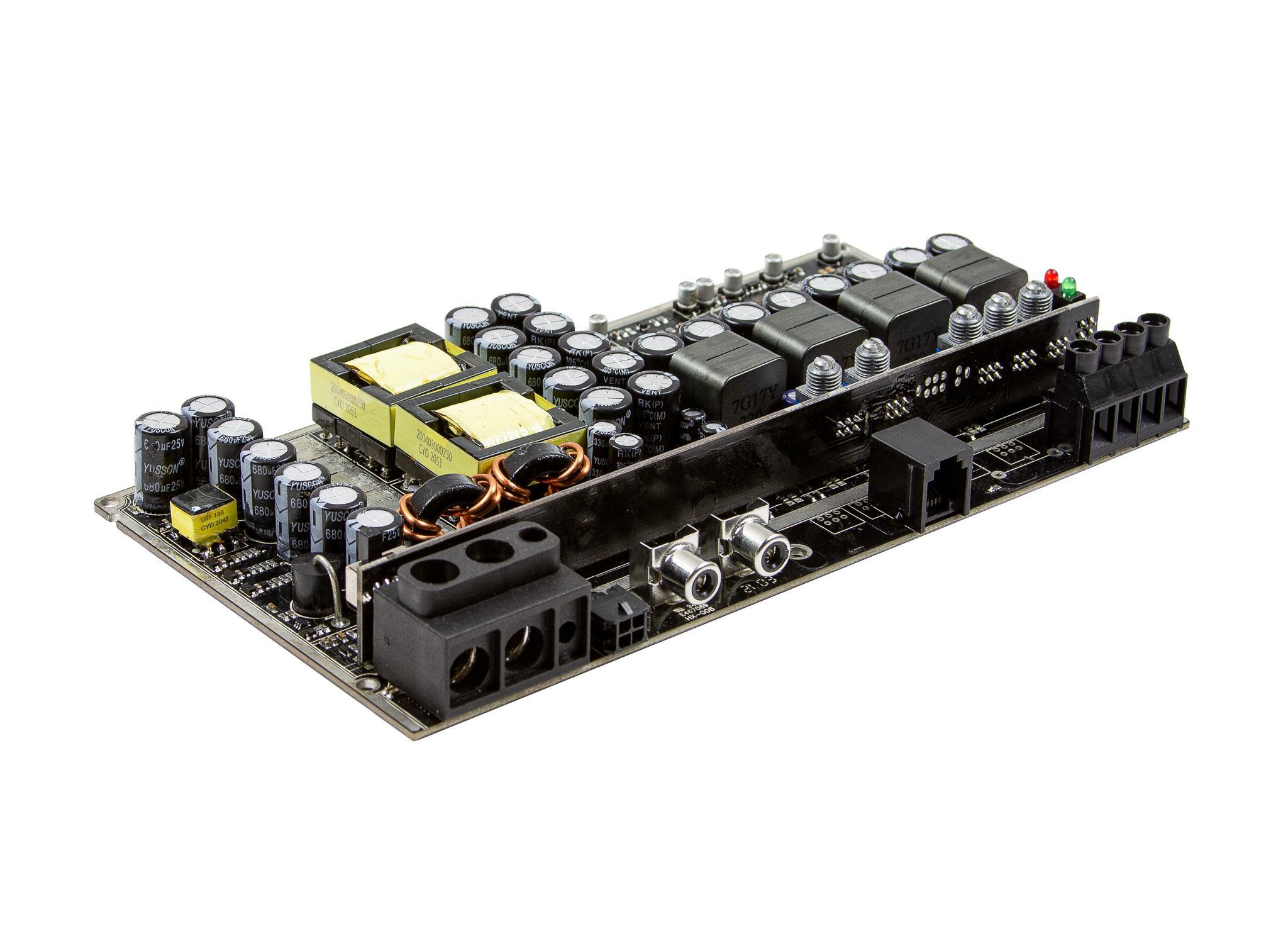 Compared to many other class-D amplifiers, Audiofrog HiFi Class-D amplifiers emit less noise, which preserves FM reception and minimizes radiated noise which may be picked up by other audio components.
Compared to many other class-D amplifiers, Audiofrog HiFi Class-D amplifiers emit less noise, which preserves FM reception and minimizes radiated noise which may be picked up by other audio components.
![]() Differential Inputs
Differential Inputs
As the name implies, differential signal inputs are designed to amplify the difference between the positive and negative signal conductors. Differential inputs are suitable for use with both balanced outputs, in which one conductor carries the signal and the other conductor carries the inverse of the signal, or with single-ended outputs, in which one conductor carries the signal and the other conductor is connected to audio ground.
In cars, audio ground is often the same as power supply ground, which is chassis ground. Chassis ground is also ground for every switch and motor in the car and also for the alternator. Many previous amplifier input topologies used single-ended inputs, which were notorious for creating ground loops, for susceptibility to radiated noise and for susceptibility to noise on the power or ground circuits. It doesn’t matter how quiet the amplifier circuit is if the input is noisy. With single-ended inputs, shielded cable should be used. The shield is designed to prevent noise from making its way to the signal conductor in the center.
Differential inputs solve these problems in two ways. First, neither conductor is connected directly to chassis ground, so the potential for ground loops is nearly eliminated. Second, because signals that appear identically on both conductors are cancelled through CMNR (common mode noise rejection), radiated noise, picked up by the cables, can be eliminated in the input preamp. In order for this to work, it’s important to use twisted pair cable rather than shielded coaxial cable. Twisted pair cable is designed to expose both conductors equally to radiated noise so it can be cancelled in the preamp.
Because the connection to ground is eliminated in the input section, differential inputs are suitable for connection to both the single ended line level output of head units and signal processors and for connection to the balanced, speaker level output of head units and factory installed amplifiers. RCA jacks are provided for standard preamp connections and a convenient Molex-style connection plug is provided for connection to speaker level outputs.
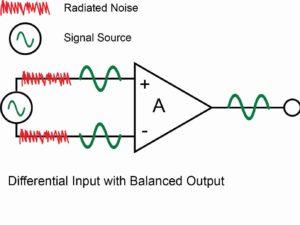 Audiofrog HiFi Class-D amplifiers include differential inputs suitable for connection to single-ended or balanced line level sources up to 10V or speaker level sources of any kind up to 30V. Speaker level and line level inputs also include signal sensing turn on for applications in which no remote turn on lead is supplied by the vehicle’s head unit.
Audiofrog HiFi Class-D amplifiers include differential inputs suitable for connection to single-ended or balanced line level sources up to 10V or speaker level sources of any kind up to 30V. Speaker level and line level inputs also include signal sensing turn on for applications in which no remote turn on lead is supplied by the vehicle’s head unit.
![]() Flex Crossover
Flex Crossover

The A600.1D mono amplifier is designed to drive subwoofers and includes a high pass filter with a frequency range from 5Hz to 40Hz suitable for use as a subsonic filter for vented enclosures or for use with small subwoofers. The low pass filter is adjustable between 50Hz and 500Hz making it appropriate for subwoofers or for midbass drivers. When used with an outboard processor or DSP, the filters can be selected at 5Hz and 500Hz to keep the onboard crossovers well outside the subwoofer’s bandwidth.
In addition, the A600.1D includes a phase adjustment control to make getting the phase right between the subwoofer and the midbass drivers easier, even in systems without a DSP.
Audiofrog HiFI Class-D amplifiers include on board crossovers flexible enough to support most any system configuration and can be defeated or move out of band when the amplifiers will be used with a digital signal processor.
![]() Remote Level Control Sync
Remote Level Control Sync
The A600.1D amplifier is compatible with the AF-RLC remote level control. The RLC is connected to the amplifier using an attached RJ-15 phone cord. When attached, the RLC will allow the user to vary the level of the subwoofer amplifier between the level setting on the control panel and infinite attenuation.
One RLC can control more than one A600.1D amplifier and through a unique feature called RLC-Sync, the level of all of the connected amplifiers will be synchronized (within about 1dB) with the amplifier that has the lowest control panel level setting.
If you’d prefer to make a custom RLC with a cool knob of your choice, plans are included in the owner’s manual for installing and connecting your own design.


